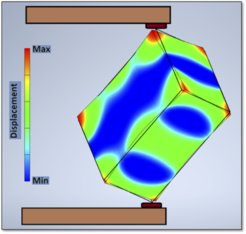Two-component superconductivity in Sr2RuO4
A focus of the work of the Physics of Quantum Materials department since its inception in 2013 has been research on the enigmatic superconductivity of Sr2RuO4. First discovered over a quarter of a century ago, Sr2RuO4 was for a long time thought to be an example of a special kind of superconductivity in which electrons pair with parallel instead of anti-parallel spins. As the years passed, this hypothesis became harder and harder to reconcile with experimental evidence, especially with experiments performed in Dresden using special uniaxial pressure apparatus originally designed especially for the study of Sr2RuO4. A breakthrough experiment last year and follow-up work recently placed on the preprint server has overturned the old thinking, and motivated a new generation of experiments aiming to pin down exactly what the order parameter is, now that we know for sure what it is not. This is not an issue of detail but one of fundamental importance to the entire field of unconventional superconductivity.
Now, a collaboration between the groups of Clifford Hicks and Andy Mackenzie in Dresden and that of Brad Ramshaw at Cornell have provided another key piece in the jigsaw. By applying a technique called resonant ultrasound spectroscopy to a crystal that was specially grown and precision-cut in Dresden for the needs of the experiment, the group at Cornell simultaneously measured the behaviour of all its elastic constants as it was cooled through the superconducting transition. The pattern of data that they obtained gives strong thermodynamic evidence that the superconducting order parameter of Sr2RuO4 must have two components. This is a surprising and important result, because it contradicts a widely-made assumption that once the previously favoured order parameter candidate was ruled out, the likeliest alternatives would be simpler, single-component states.
At the same time as the above work was being carried out, another collaboration, from Toulouse in France and Sherbrooke in Canada, was performing a different class of ultrasound measurements that give complementary information on a subset of the elastic constants. The fundamental conclusions of the two experiments are the same, and the papers have just been published together in Nature Physics, accompanied by a commentary article from Daniel Agterberg of U. Wisconsin that highlights their broader significance. The plot thickens regarding the superconductivity of Sr2RuO4.
Andrew Mackenzie / APM

Simulation of one of the resonant vibrational modes of the Sr2RuO4 sample as mounted in the resonant ultrasound spectroscopy apparatus.













